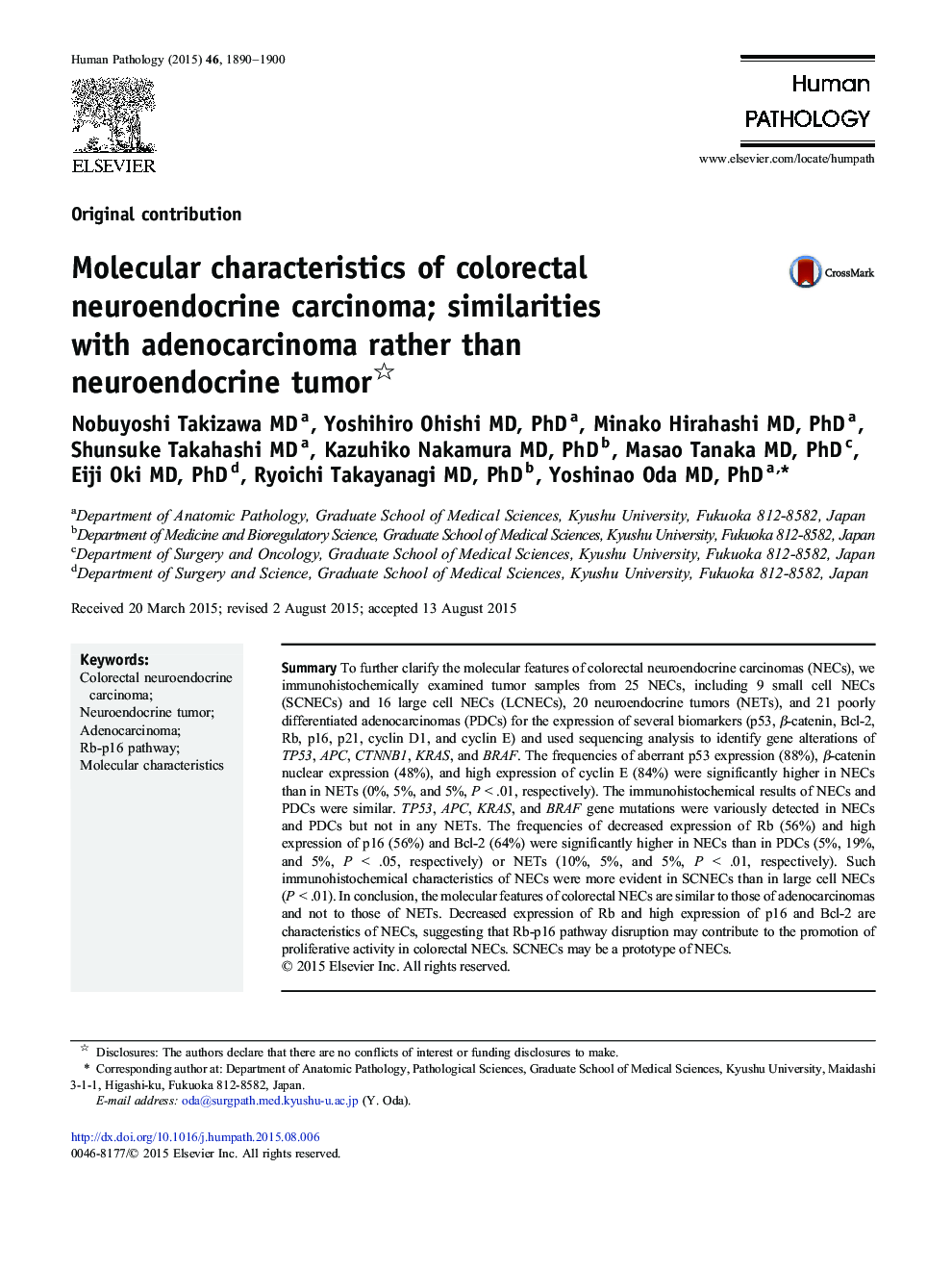| Article ID | Journal | Published Year | Pages | File Type |
|---|---|---|---|---|
| 4132696 | Human Pathology | 2015 | 11 Pages |
SummaryTo further clarify the molecular features of colorectal neuroendocrine carcinomas (NECs), we immunohistochemically examined tumor samples from 25 NECs, including 9 small cell NECs (SCNECs) and 16 large cell NECs (LCNECs), 20 neuroendocrine tumors (NETs), and 21 poorly differentiated adenocarcinomas (PDCs) for the expression of several biomarkers (p53, β-catenin, Bcl-2, Rb, p16, p21, cyclin D1, and cyclin E) and used sequencing analysis to identify gene alterations of TP53, APC, CTNNB1, KRAS, and BRAF. The frequencies of aberrant p53 expression (88%), β-catenin nuclear expression (48%), and high expression of cyclin E (84%) were significantly higher in NECs than in NETs (0%, 5%, and 5%, P < .01, respectively). The immunohistochemical results of NECs and PDCs were similar. TP53, APC, KRAS, and BRAF gene mutations were variously detected in NECs and PDCs but not in any NETs. The frequencies of decreased expression of Rb (56%) and high expression of p16 (56%) and Bcl-2 (64%) were significantly higher in NECs than in PDCs (5%, 19%, and 5%, P < .05, respectively) or NETs (10%, 5%, and 5%, P < .01, respectively). Such immunohistochemical characteristics of NECs were more evident in SCNECs than in large cell NECs (P < .01). In conclusion, the molecular features of colorectal NECs are similar to those of adenocarcinomas and not to those of NETs. Decreased expression of Rb and high expression of p16 and Bcl-2 are characteristics of NECs, suggesting that Rb-p16 pathway disruption may contribute to the promotion of proliferative activity in colorectal NECs. SCNECs may be a prototype of NECs.
